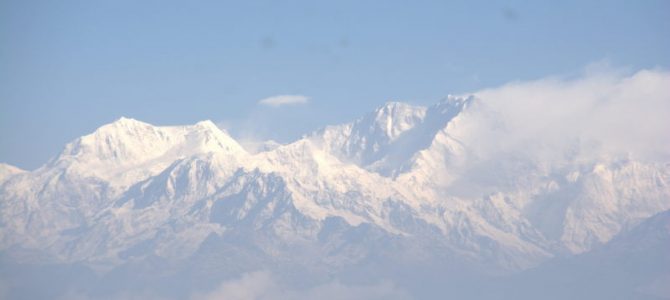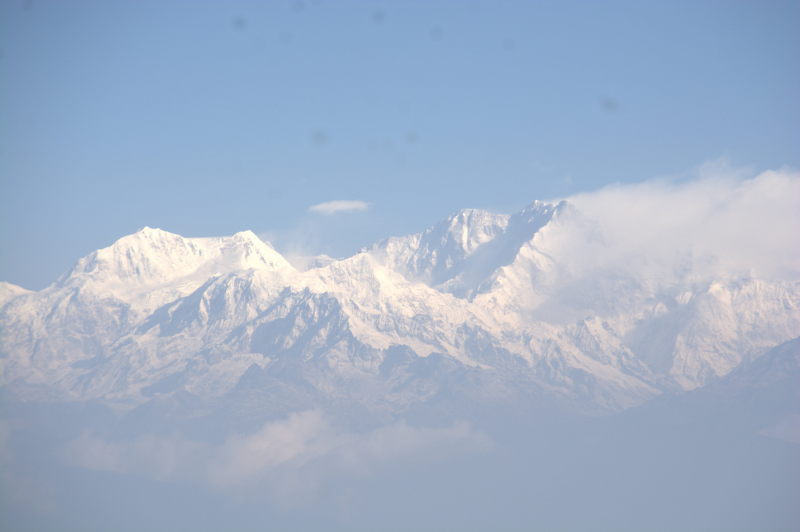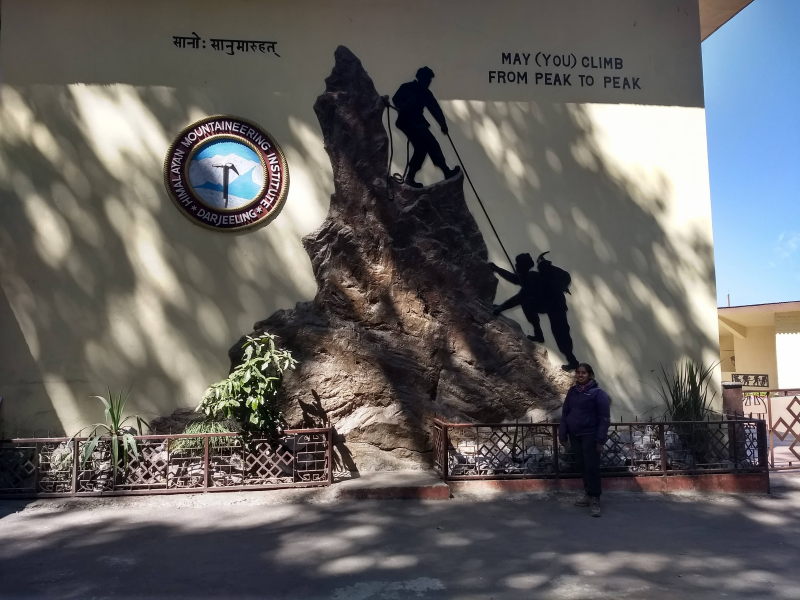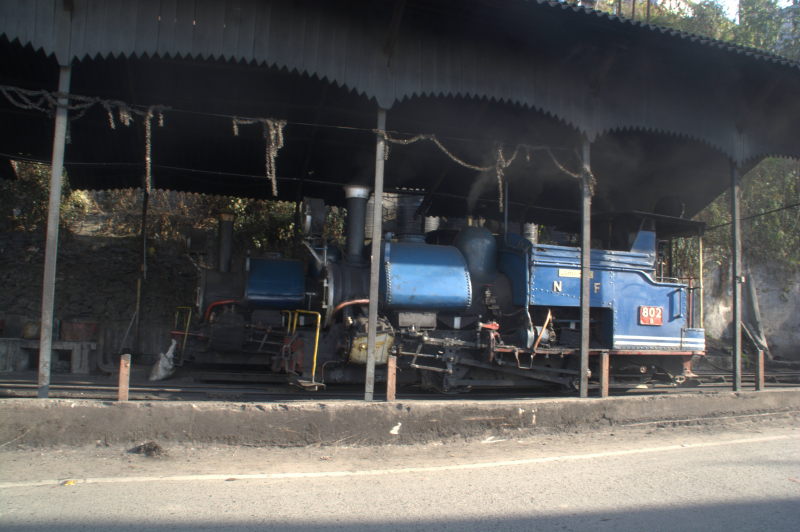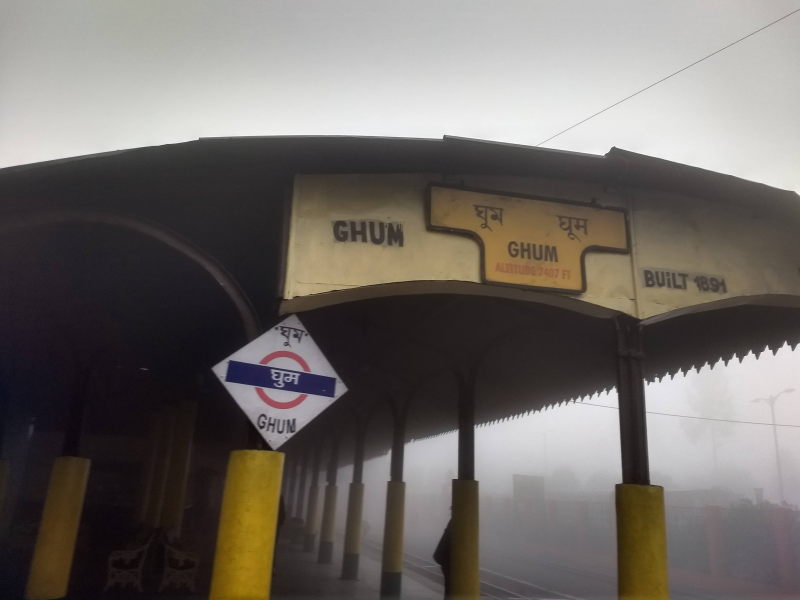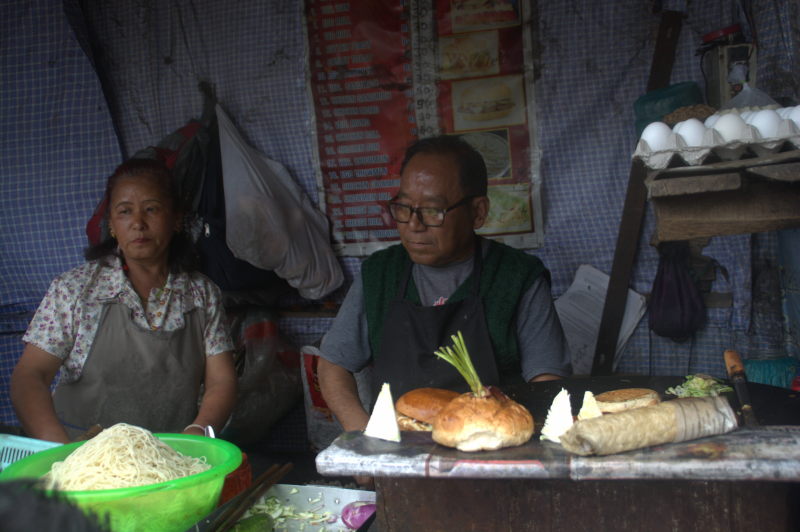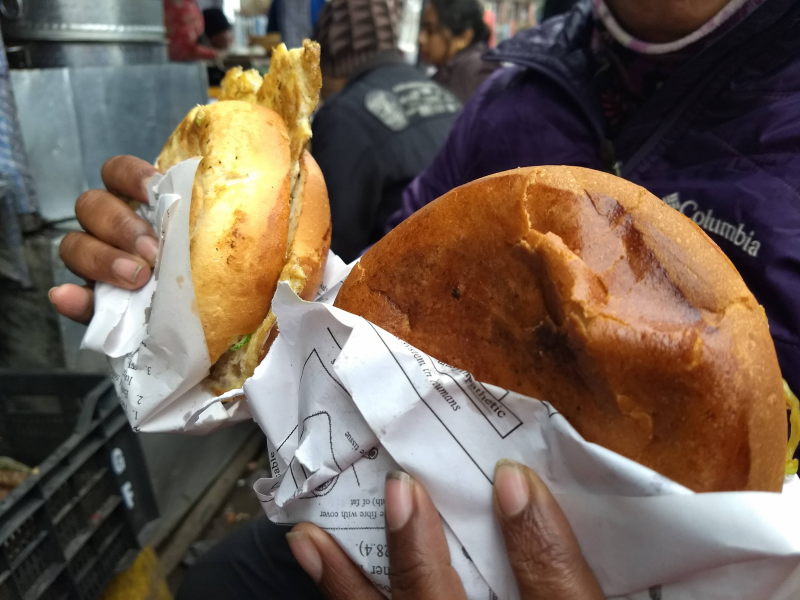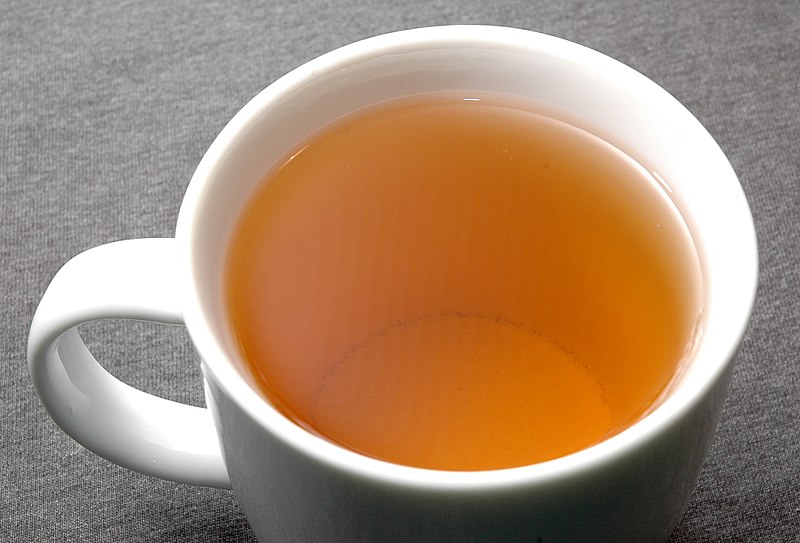Often called the queen of hill stations, Darjeeling is a dream honeymoon destination for several couples. Nestled in the high Himalayan mountains of Gorkhaland, a Nepali-speaking district in West Bengal, Darjeeling has been a fascination since the British rule. It was built as an escape for the aristocrats of the East India company from the summer heat of their capital Calcutta. Later, Darjeeling evolved as a town with several boarding schools and one premier institution to teach mountaineering. Darjeeling is beautiful, but there is no beauty comparable to the mountain looming from the city’s north. This mountain stands as a backdrop to the busy town, almost watching over it like a guardian angel. It is the third highest mountain in the world — Kanchenjunga.
Geography of Darjeeling
At the tri-state border of India, China and Nepal, the eastern Himalayas rise to some of the loftiest heights in the world, with two of the 3 tallest mountains on the earth situated in this area. The world’s tallest mountain Everest is at the border of Nepal and Tibet. But the third highest, Kanchenjunga, is at the border of India and Nepal. From that peak, the mountain ranges gradually shrink as they progress southwards. These mountain ranges are home to a group of several mountain tribes who speak Nepali as their native language and revere the Kanchenjunga peak as their supreme Goddess. These mountain ranges are throughout the state of Sikkim.
The final slopes of this range extend into the state of West Bengal, before the Bramhaputra plains start in the district of Jalpaiguri. The mountainous district inside the boundary of West Bengal is known as Gorkhaland, named after the tribe of valour that inhabits these mountains. The city of Darjeeling is the headquarters of Gorkhaland district. Other important cities in Gorkhaland are Kurseong, Mirik and Kalimpong. It would be difficult to know that Gorkhaland is not part of Sikkim, but for the river that cuts the state of Sikkim from the district of Gorkhaland. The north bank of the Teesta river is classified under Sikkim and the south bank under West Bengal. This river is the lifeline of both Sikkim and Gorkhaland. It flows west to east in Gorkhaland. As it reaches the Jalpaiguri district, it bends south and joins the east-west flowing Brahmaputra river outside the military town of Sevok.
The climate in the slopes of Gorkhaland makes it ideal for growing tea, which is the prized crop in the district. Other important crops are cardamom and various other herbs.
People of Gorkhaland
Though in the state of West Bengal, the people of Gorkhaland are ethnically and culturally different in nearly every way from the people of the Gangetic and Brahmaputra plains of West Bengal. Their ways are closer to those of the state of Sikkim, across the Teesta river. The people of Gorkhaland are mountain tribals from several communities such as Gorkha, Sherpa, Lepcha, Toto, Mech and Bhutia. Depending on the ancestry of the tribe, they practise either Hinduism or Buddhism. Along with the mainstream deities, they also worship their own set of mountain deities, the chief ones being Goddess Kanchenjunga and the local name for Mt Everest, i.e. Sagar Mata.
The chief language of the Gorkhaland region is Nepali, which uses the Devnagari script also used in Hindi, Marathi, Rajasthani and Konkani. This is also the official language of the country of Nepal. Additionally, each tribe speaks its own language. The people of Gorkhaland also speak Bengali to align with the state government. They speak Hindi and English for tourism and education. It is extremely easy for tourists to get by in Gorkhaland, especially Darjeeling, by speaking English. Hindi is also widely spoken though it is not a preferred or a fluent language in this region.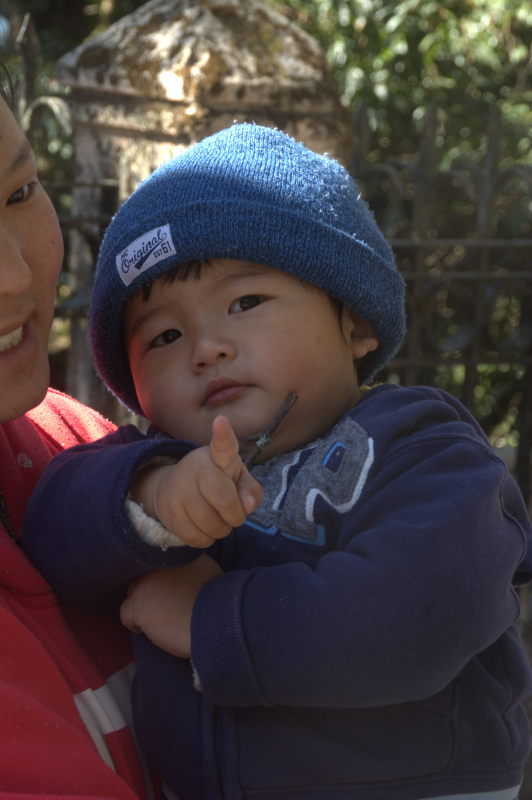
The tribes started off in these regions as goat and yak herders, but with progress, became farmers. The Gorkha regiment in the army is considered one of the bravest and the most ruthless regiments in the Indian Army. People in these regions aspire to join the army from that regiment. Trekking and mountaineering are also lucrative professions. People work as guides, cooks and porters in expeditions or as instructors / support staff in the Himalayan Mountaineering Institute.
The most important entrepreneurship around Darjeeling is based around their prized crop — tea. Tea estates, tea processing plants, tea distribution (both wholesale and retail) and export form the major businesses here. Professions and businesses around tourism also make up a huge number, ranging from tour operators and hotel owners to taxi drivers.
A unique cultural difference in the whole of north-east India is that you will hardly find people playing cricket. Football rules here. The most acclaimed Indian football players are either from Goa or from the north-east. Darjeeling is no different. It is so much a part of the culture here that you will see messages like ‘FCB’, ‘You Will Never Walk Alone’, ‘Red Devils’, ‘Ronaldo’ and ‘Messi’ tagged on the front or the side of trucks or on vehicle registration plates.
Note: For those who did not understand any of those messages, please consult your football-literate friends 🙂
Let’s look at the list of things you can do at Darjeeling.
Chaurasta
At the heart of Darjeeling is the town square called Chaurasta. The name is given because 4 streets meet at this point. Each of these streets approaches from different parts of the city, each having a seperate character. One of the streets is good for street shopping woollen craft and souvenirs. Another street is good for street food. Yet another leads towards the most important education and government institutions in Darjeeling. The fourth one leads to Kanchenjunga viewpoint. All four roads end in a big square, which is the busiest part of town with vendors, tourists and street artists. Vehicles are not allowed inside the square, so it is amusing to see locals switching off their motorbikes and pushing them by hand like bicycles to get across the square as a shortcut. Failing to use this technique means that they need to drive an additional five kilometres around town and in traffic to get across.
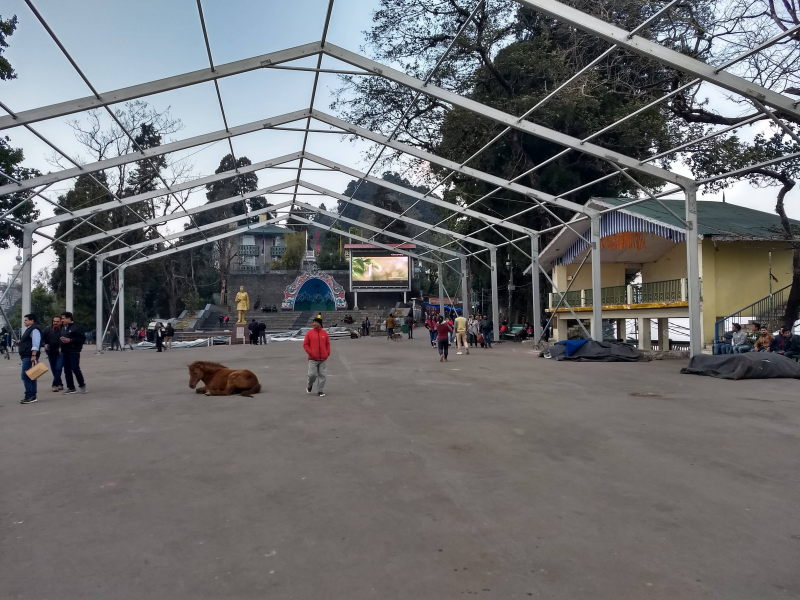
Chaurasta is the town’s main square. It is the marketplace of Darjeeling. Early in the morning it is quite laidback. But no so in the evening.
Kanchenjunga viewpoint
This is the most fascinating place at Darjeeling. Truth is this place is unique to Darjeeling. No other place in Gorkhaland commands such as fantastic view of India’s most beautiful and tallest mountain. Sure, there are other places from where you get to see the mountain, but they are either unkempt or dirty or simply not romantic. But at the viewpoint at Darjeeling, a promenade street goes through a row of pine trees on one side and an open precipice with a fence on the other. This road starts from the Chaurasta, bends around a hillock and takes a U-turn to go right back to Chaurasta. Meaning, it is made with no purpose, but to give you a view of the mighty peak. There is a Shiv temple at the top of the hillock. It is quite dramatic to see the icy white peak in the distance while the trees near you are blooming with colourful rhododendrons.
Himalayan Mountaineering Institute
HMI is India’s leading mountaineering institute started by Sherpa Tenzing Norgay, the first man to ascend the summit of Mt Everest. It was started with the goal of teaching mountaineering to Indians. Since then, thousands have completed the 3 levels of courses they offer: basic, advanced and search & rescue. Along with civilians, the soldiers and officers of the Indian Army have also benefited immensely from the courses. As a tourist at HMI, you can look around the campus, try a mini rock climbing wall and visit the HMI museum which shows scaled-down models of the different Himalayan ranges, stories about attempts to climb Mt Everest, samples of gear used by mountaineers and the flora and fauna around Himalayas.
Padmaja Naidu Zoological Park
This zoo is in the same compound as the HMI. It has some rare animals that are not found in many zoos around India. Red panda, clouded leopard and black panther are some rare species kept in good condition in this zoo.
Japanese Buddhist Temple
This is a Buddhist temple to the west of Darjeeling city, about 3 km from town. The temple compound also has a white Peace Pagoda, that shows four avatars of Buddha. The temple was started by Fuji Guru, who was also the founder of the Nipponzan Myoho order for world peace. Fuji Guru was a close friend of Gandhiji, who found temple’s chant Namo Myoho Renge Kyo meaningful to his life and for the life of the members of the Sevagram Ashram near Nagpur. This Ashram’s morning prayer includes the chant.
During prayer timings, you get to sit in the prayer hall and participate in this chant. You are given a percussion instrument that looks like a tennis racquet. A wooden frame is wrapped with a thick membrane. If you strike the membrane with a sceptre, a thudding vibration is heard. This vibration is used as the rhythm while you chant.
Gangamaya Park
This park is a green cover with lawns, botanical gardens, a brook and a bridge over the brook. Tourists come here intending to spend some time away from the noise of the city, but rather end up with a traffic jam and more noise here! What tourists most enjoy here is dressing up as sherpas and having a photo shoot at one of the outlets than provide such dresses.
Tenzing Rock
Tenzing Rock is a series of rock faces on hills used by the Himalayan Mountain Institute for training their students. There is one hill used by beginners and another by the members of the advanced course. The hill used by beginners has its peak right by the side of the highway about 20 metres above the highway. The bottom of the hill is at the base of the precipice which is at quite a depth below the highway. The 20 metres of the hill which can be accessed from the highway itself is allowed for use by tourists. There is a support staff who tether you to a rope and then keep you safe as you attempt to climb to the top.
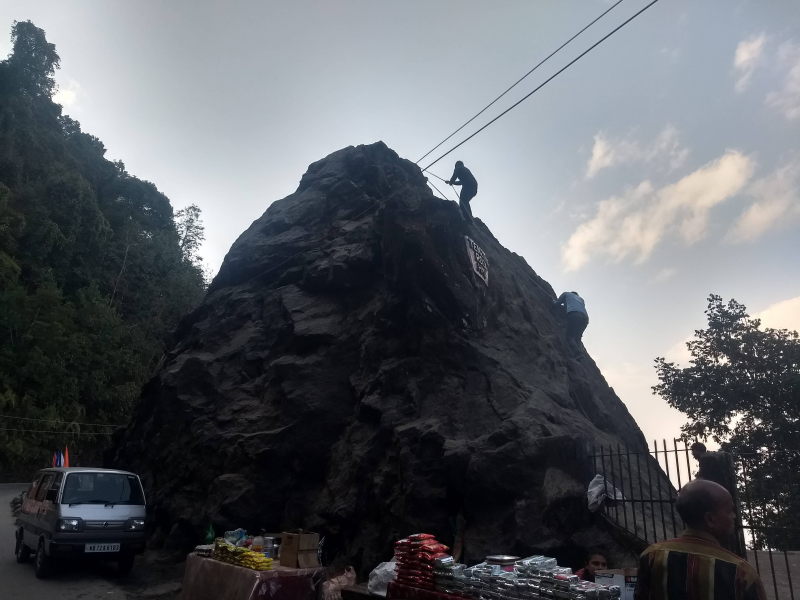
Section of Tenzing Rock open for tourists to try their hand at very rudimentary rock climbing. The actually hill drops a couple of thousand feet below the highway
Darjeeling Himalayan Railways
There are two phases in DHR. First, a jungle safari train runs from New Jalpaiguri in the plains to Tindharia, a town halfway between New Jalpaiguri and Darjeeling. We’ll talk about this route in a seperate post. The second route between Kurseong to Darjeeling is a true mountain route as the train winds and weaves through the mountains of Gorkhaland, covering towns like Ghoom and Sonada along the way. The train travels at a slow pace and criss-crosses the Siliguri – Darjeeling highway several times. DHR is a UNESCO heritage recognised route. It was started with the intention of covering the entire length from New Jalpaiguri to Darjeeling. But several landslides over the years have damaged the tracks at several places, so it was broken into the two routes we just described. Several attempts were made to restore the entire route, only for the next landslide to waste those efforts. As of our last trip to Darjeeling, still no trains are able to run the entire length due to damaged tracks. The jungle safari route is operated solely by diesel locomotives. But on the route from Kurseong to Darjeeling, there are a few services that use a steam locomotive.
Ghoom monastery
At 2258 metres or 7407 feet, Ghoom railway station on the DHR is the highest railway station in India, beating Nilgiri’s Lovedale by 45 metres / 150 feet. Outside the railway station are two monasteries collectively referred to as Ghoom monastery. The old monastery is the original monastery as this location. It is called Yiga Choeling and is a shrine worshipping Maitreya Buddha or the wise one. The monastery ran into financial and maintenance problems over the last century. An new monastery was commissioned right near the old one. Both monasteries are operational today.
Batasia loop
Batasia loop is a garden in the town of Ghoom near Darjeeling. The garden has several lawns. The centre piece of the lawn is an obelisk which has the names of all the martyrs who laid their lives while protecting India from attacks from the eastern frontier. Several names belong to martyrs from the 1962 Indo – China war. The statue of an Indian soldier holding his gun with its barell down and his head bowed in respect and sorrow completes the touching scene. If the day is clear, I suggest that you view the obelisk from another perspective. The Kanchenjunga peak can be seen across the valley from the Batasia loop. Place yourself in the park such that the obelisk and the soldier statue are in the foreground and the icy peak is in the background. It seems like the mighty peak is also paying homage to her children who tried to protect her land. Such a view can be seen from the platform of the railway station at Batasia loop.
Which brings us to the name ‘Batasia loop’ itself. The word loop suggests a string turning around and passing itself before proceeding. The railway track at Batasia loop does the same. The track appearing from Darjeeling turns into the park and continues to turn 360 degrees until it passes under itself under a bridge. There are two uses for this. The railway route from Darjeeling to Ghoom is very steep. To prevent the train from taking a very steep climb, the distance is lengthened and the grade softened. Second, the train turns a full circle with Mt Kanchenjunga in full view. Batasia loop is the best place from which travellers on the DHR can get a complete view of the mountain from any window or door in the train.
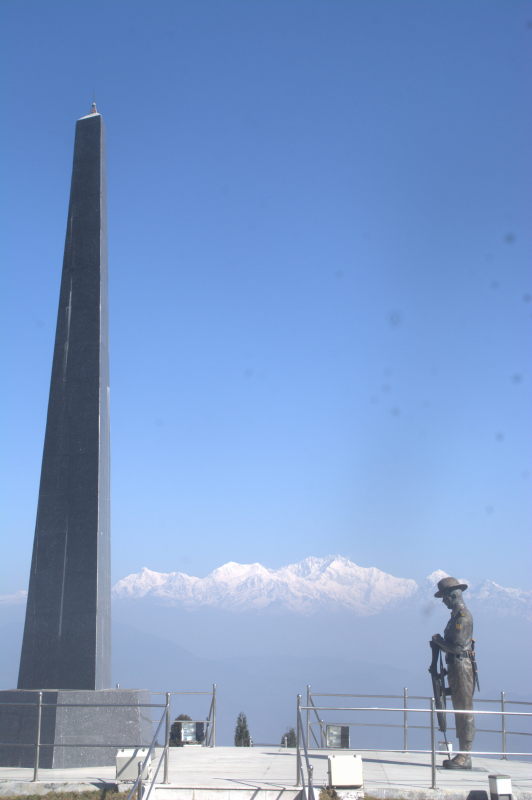
The martyrs obelisk at Batasia loop with the statue of the grieving soldier. In the background is Mt Kanchenjunga
Other places of interest around Darjeeling
Here are some places within 25 km of Darjeeling. You can take a day trip from Darjeeling to these places and return. Or you can use these places as transits on the way to Siliguri.
Mirik: There are two routes from Siliguri to Darjeeling. One route sticks to the rail route and goes through the towns of Kurseong, Jorebungalow, Sonada and Ghoom. the second route is parallel to the Indo – Nepal border. Mirik is a town on this route. In this town, there is a beautiful lake. There are lawns and eateries around this lake. One can hire a pedal boat to go around this lake.
Pasupati Nagar: Also on the same route as Mirik, Pasupati Nagar is a village that straddles both India and Nepal. Tourists need to register themselves along with a government ID such as driving license, Aadhar, voter card or passport. One can shop for handicrafts such as handbags, bamboo work, small furniture and herbs from the market inside Pasupati Nagar.
Kurseong: If you find Darjeeling too crowded, you can spend some time at the less crowded town of Kurseong. There are fantastic views of the mountain slopes and tea gardens from Kurseong without all the selfie-happy tourists. As mentioned above, the DHR train runs between Kurseong and Darjeeling. Plus there are several Sumo taxis plying on the Siliguri to Darjeeling route via this town. So it is a snap to commute to Kurseong.
Getting to and around Darjeeling
Getting to Darjeeling has several options. The most unique option is using the DHR toy train from New Jalpaiguri or Siliguri railway stations. The roads are not wide enough for buses, but there are several Sumo taxis between Siliguri and Darjeeling. Most of them cover the Kurseong – Jorebungalow – Sonada – Ghoom route. But you can ask around for taxis which use the Mirik – Pasupati route, if you plan to go that side.
One important thing to remember is that taxis from outside Gorkhaland are not allowed inside. For sightseeing around Darjeeling, you need to use local Gorkhaland taxis. Taxis from elsewhere, such as from Siliguri or Gangtok will drop you near the city’s Rink Mall on Laden La Road. This is the city’s taxi terminal. Non-Gorkhaland taxis are not allowed beyond this point.
There are no restrictions for private vehicles. You can take your own car or motorbike from anywhere in India wherever you please inside Gorkhaland. In India 360, we used our motorbike to move around Gorkhaland.
What to eat
What all of India mistakenly calls ‘Chinese food’ is actually what the natives of Gorkhaland and Sikkim eat everyday. The origin of the dishes may have been Chinese (no proof to back that up), but today Indians own them and have given them new flavours with an assortment of spices and sauces. At Chaurasta junction, there is a row of stalls that make really delicious noodles, burgers, momos, rolls and frankies. There is also one shop that makes Tibetan snacks. If you are not the street food type, the walk-only road between Rink Mall and Chaurasta, also called the Mall Road, has some good restaurants. We found all of them too expensive and stuck to the much tastier street food. The restaurants with their ambience look like they are made with foreigners in mind or for spend-happy tourist families from Kolkata, Guwahati, Mumbai or New Delhi.
Souvenirs
There are quite a few things that can be taken back from Darjeeling. Here are some things unique to Darjeeling.
- Darjeeling tea: Compared to regular tea from Assam or Ooty, Darjeeling tea is lighter in colour and must be had with water and not milk. After steeping in water, the tea looks golden. There are three types of tea in Darjeeling: white, oolong and green. With all those leaves, the beverage is prepared by steeping in hot water and leaving the leaves in the water for sometime to extract maximum taste out of them.
- Woollen wrist bands: On the Mall Road, the street market between Rink Mall and Chaurasta, you will see plenty of youth sitting by roadside stalls with colourful bands. The base of the bands is made of paper or plastic. Around the band, woollen threads of two colours are woven. The primary coloured thread is wrapped all around the band, forming the base colour of the band. The secondary colour is used to create a message in English alphabet. You can either get readymade bands with pre-written messages or you can get a band with colours and a message that you choose. One will be woven for you in front of your eyes.
Most of the readymade bands revolve around football clubs, their flags and logos, such as FCB in maroon and blue, Arsenal in red and white, ‘You will never walk alone’ message in white on a read background, ‘Read Madrid’ in black on white background and so on. - Clothes and handicrafts : Several shops on the mall road sell wind breakers, sweaters, cane and bamboo handicrafts, hand-made bracelets and hand-made jewellery.
- Herbs and spices: Gorkhaland is home to several herbs and spices, cardamom being the most popular one. Several shops at Darjeeling sell a variety of herbs and spices.
Conclusion
Being in Darjeeling and whole of Gorkhaland is like being thrown open to a different culture. At first glance, it looks like you have entered a new country, maybe Nepal or Tibet. But the more you talk to the people, the more you realise that they too are one of us. Gorkhaland is one experience I highly recommend. Mt Kanchenjunga is certain to make you spellbound. And the trip is sure to make you beam at the diversity of the geography and the cultures of this great nation.

